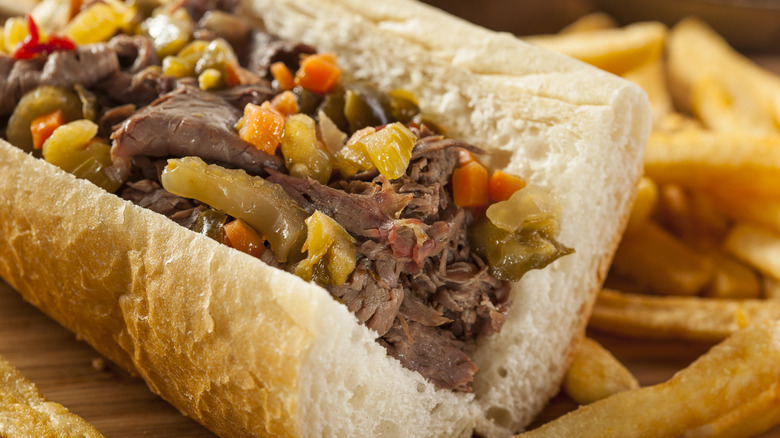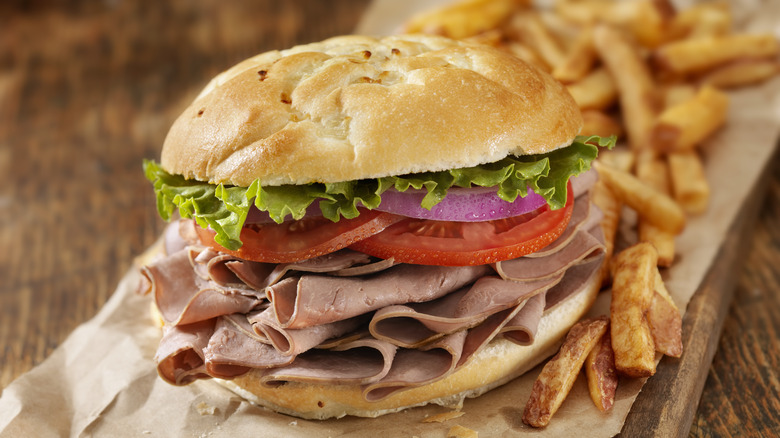The Difference Between Roast Beef And Italian Beef Sandwiches
The rivalry between the East Coast and the city of Chicago is well established. Whether it's the Bruins/Blackhawks hockey rivalry, or the deep dish pizza vs. New York slice debate, the cultural traditions of both regions seem to be in a constant, albeit good-natured, conflict. But when it comes to each's beef sandwich, there isn't so much a rivalry as a difference in construction. The classic roast beef sandwich is a staple of Boston and New York delis, while the beefier, more loaded Italian beef sandwich is an icon of the Windy City.
While many different meat cuts make for a great roast beef sandwich, the leaner cuts, like top loin or round roast are the most common. On the other hand, Italian beef is typically made with chuck roast, the classic pot roast cut full of rich marbling fats. The toppings differ as well; while a deli roast beef sandwich can be filled with almost anything, Italian beef sandwiches are always topped with provolone cheese and the Chicagoan specialty, Giardiniera, a tangy concoction of pickled cauliflower, carrots, celery, and red bell peppers. But the differences go even deeper than this.
A matter of adaptability and tradition
There is a particular way in which the chuck roast for an Italian beef sandwich is cooked that makes it extra flavorful. Chuck is a particularly tough cut from the neck and shoulder of the cow and therefore requires low and slow cooking in beef broth to make it tender enough for sandwiches. Once the beef is finished cooking, it is shredded together with some pepperoncini peppers and their brine, which provide a mild, salty heat. After slicing, the meat is put back in the au jus to soak up as much juicy flavor as possible. The sandwich is assembled by spreading the tender beef on a hoagie roll, adding the toppings, and then dipping the sandwich end in the broth, like a French dip. Hoagie rolls are best for this sandwich because they are able to absorb the juices without falling to pieces.
Deli roast beef sandwiches, by contrast, are almost always served cold on several different types of bread with numerous toppings, making them far more adaptable to customer preferences. This could be anything from a sub with thin slices of beef topped with arugula, Swiss cheese, and jalepeños or a ciabatta roll stuffed with tender RB, red onion, Russian kale, Dijon mustard, and horsie sauce. Since the Italian beef sandwich is a Chicago institution, there is a set way of making one that really can't be tampered with. Differences aside, whichever sandwich you choose, you will be in for a mouthful of fantastic flavor.

